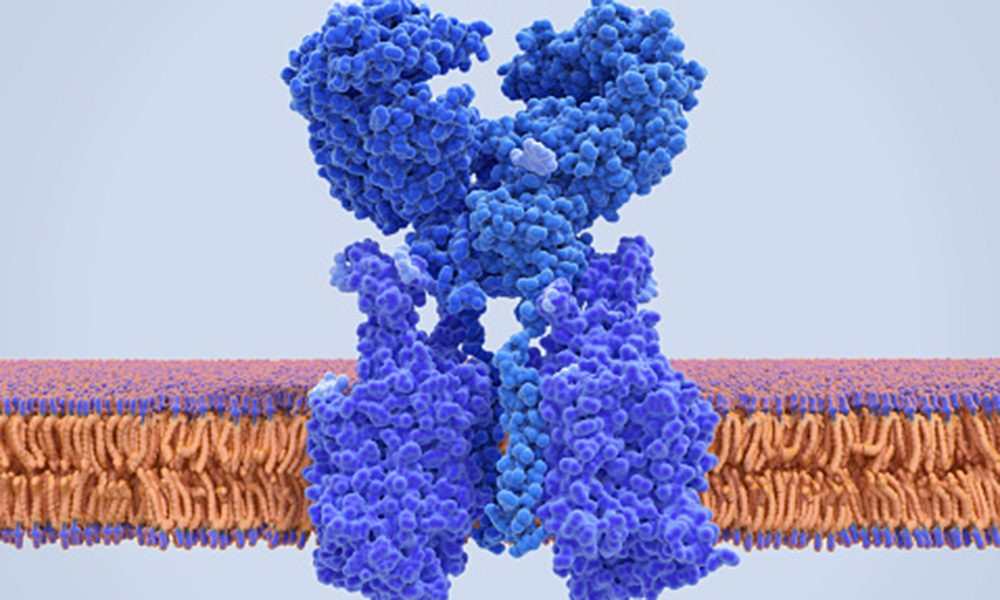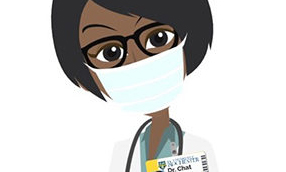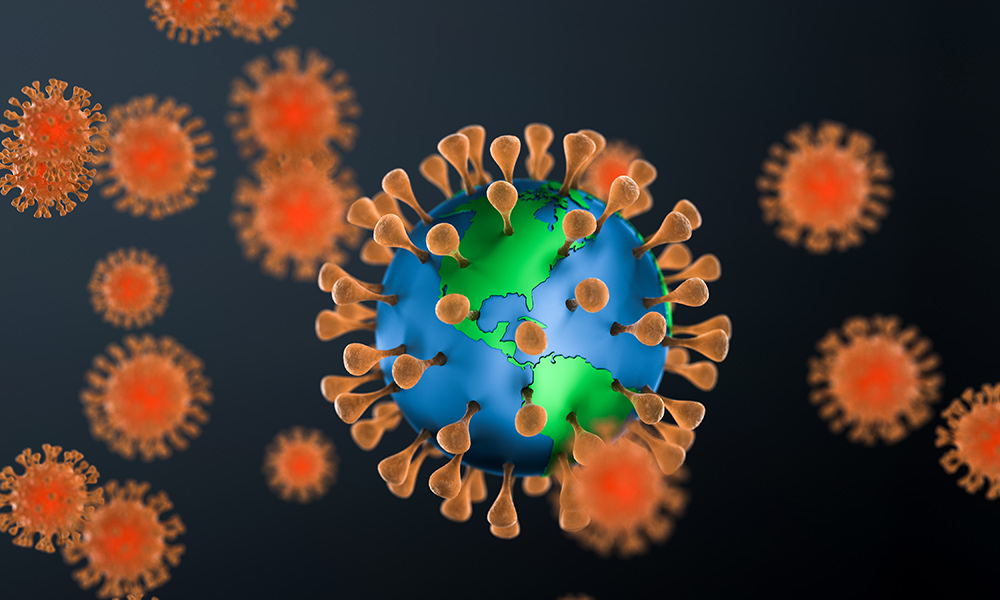COVID-19 testing is a vital component in the epidemiology of virus tracking and is a key factor of the University of Rochester’s plans to reopen campus. The University’s Coronavirus University Restart Team (CURT) has worked with county health officials and with the national experts in virology, epidemiology, and infectious disease at the Medical Center to fully understand the most effective testing strategies and to develop a regimen of testing protocols and processes.
The team is experienced in researching COVID-19 testing methods and has worked diligently to understand how best to adjust the regimen based on results and on the latest guidance from state, national, and international experts.
Rochester Restart
Stay up to date on the University’s plans to safely phase in campus operations.
Coronavirus concern
If you’re concerned about sympotoms of potential exposure to coronavirus, visit the University’s COVID-19 website for guidance and information.
Jane Gatewood, vice provost for Global Engagement and CURT cochair, says the expertise has been instrumental in developing plans for tracking and monitoring COVID-19.
“We have developed a comprehensive plan to test and monitor students, faculty, and staff to prevent the spread of COVID-19 on campus, and we are very confident in the medical guidance on which our plans are based.”
What forms of COVID-19 testing is the University implementing?
The University will use the Medical Center’s Clinical Microbiology lab to conduct standard COVID-19 RT-PCR viral tests for every undergraduate student living on campus. Undergraduate students living on campus will be required to be tested. The University will permit students to arrive on campus on a staggered move-in schedule. All students will be required to take a COVID-19 RT-PCR test upon arrival or within 72 hours prior to their arrival on campus, so long as they arrive by car, traveling directly to campus from home with no overnight stop.
COVID-19 test results will be reported to the University and to the student within 24 hours. Students will move in prior to receiving the results of the test, but roommates in double rooms will move in on different days to ensure both individuals have received a negative test result. If a student receives a positive COVID-19 test, they will be relocated to one of the University’s isolation living areas.
The University will also conduct a stringent monitoring, surveillance, and testing plan by requiring all students, faculty, and staff to complete a daily COVID-19 symptom screening on their phones, tablets, or computers using the Dr. Chat Bot app.
Using the app is required for any member of the University community who is on campus. The app prompts users to report their symptoms as a way to track COVID-19 and identify new exposures to the illness. When users indicate they are not experiencing any of the symptoms, they receive a confirmation that it’s safe to report to campus or go to class. If an individual is experiencing any one of the listed symptoms, the person is prompted to provide more information to University Health Service (for all students and all non–Medical Center employees), or Employee Health (for Medical Center faculty and staff). Upon review by UHS, symptomatic cases will receive COVID tests.
“The app has already been widely used by Medical Center faculty, staff, and trainees and has been extremely effective at monitoring for symptoms of COVID-19 and identifying persons who need further evaluation and testing,” says Paul Graman, epidemiologist and professor of infectious disease medicine at the Medical Center. “The screening is continuously updated to incorporate new symptoms, according to the most recent COVID-19 research and state and national guidelines.”
How will these strategies be effective in preventing the spread of COVID-19?
In addition to testing, one of the key strategies in reducing potential infection rates is to identify the possibility of infection as soon as possible. To do that, the University needs a way to track people with COVID-19 symptoms in close to real time. If people have symptoms, it’s important that they take measures to isolate themselves from others, regardless of whether they eventually test positive for COVID-19.
That’s what Dr. Chat Bot is designed to do.
If symptoms are detected, the University will conduct viral testing of symptomatic individuals. If an individual tests positive, the University, working in collaboration with the Monroe County Public Health Department, will manage contact tracing to locate individuals who may have come in contact with the infected individual. The University has reserved quarantine (possible exposure but free of symptoms) and isolation (symptomatic with a pending or confirmed positive test) space housing on campus.
What about other testing methods, such as tests that measure oxygen levels? Should these be implemented as well?
While many different kinds of tests have been discussed in professional and lay literature, University and Medical Center health care leaders emphasize the need to scientifically verify all testing protocols before they can be implemented with any degree of confidence. As of this summer, the COVID-RT-PCR viral test is the scientific standard recognized by national and international regulatory agencies.
“There are no other approved methods for detecting SARS-CoV-2 infection,” says Michael Apostolakos, chief medical officer and vice president of the Medical Center.
Other methods of testing are being explored, but because of the risk of generating an unknown level of false positives, they’re not being used to screen for COVID-19 as of this summer. “In terms of oxygen screening, for example, we are only using it to evaluate ill patients with known or suspected COVID-19 infection.”
Other methods must be scientifically verified before they are rolled out as screening tools, Apostolakos says. In addition to the risk of false positives, unverified methods may also give patients and providers a false sense of security.
How does the University determine if a new testing method is valid and should be implemented?
The CURT team is closely monitoring state and national guidelines as well as the latest scientific research on COVID-19 screening tools.
“The way to determine that a new diagnostic test is valid is to do a head-to-head comparison with the gold standard test—the COVID-19 RT-PCR viral test—on a large, diverse group of patients who are presenting with COVID-19 symptoms, plus some normal controls as well,” says Ralph Manchester, vice provost and director of University Health Service. “Until that has been done, I would not favor using other methods to screen members of the University community for infection.”
What other mandates will the University be implementing to prevent the spread of COVID-19 on campus?
The University is following the guidance of the New York State Department of Health, the US Centers for Disease Control and Prevention, the World Health Organization, and other leading health care organizations in putting in place mandatory mask-wearing, hand-hygiene, and social-distancing protocols, and increasing cleaning and disinfecting protocols.
SOCIAL DISTANCING
The University is employing a hybrid online and in-person approach to classes. All large lecture classes will be conducted online. Smaller classes will be a hybrid of online and in-person to reduce density and to accommodate students who will be unable to attend in person.
MASKING
Students, faculty, and staff members are required to wear a face mask any time there is more than one person in a given space, including times of brief interaction between coworkers or friends, and anytime another person is within six feet. Face masks must be worn in all campus common areas, including dorms, classrooms, restrooms, break and eating areas, and while working in laboratories. Masks will be made available to all students and employees.
HAND HYGIENE
Environmental Services will continue to provide and replenish hand sanitizers in building entryways and common areas, but frequent hand washing with soap and water continues to be the recommended hand hygiene guidance.
DISINFECTING SURFACES
The University has enhanced cleaning and disinfecting efforts across campus. Campus staff will rigorously disinfect all surfaces daily. Building common areas and restrooms will be cleaned and maintained by University Facilities. Facilities will perform fogging disinfecting as directed by UHS in classrooms and daily in dormitory bathrooms and other high touch points such as door, light switches, handrails, and elevator buttons. In dining facilities, a full sanitizing and disinfecting of food contact surface areas, serving areas, cooler door handles, points of service areas, etc. will be done at a minimum of every hour and before and after each service time. Cleaning supplies will be readily available in all classrooms and other areas to promote local disinfection.
REDUCING AIRBORNE TRANSMISSION
Airflow and filtering will be optimized in University buildings in order to help reduce airborne transmission of infection.
How effective are these protocols?
Since universal masking went into effect at the end of March, the University knows of very few cases in which COVID-19 was transmitted from a patient to a caregiver or from an on-campus member of the University community to another on-campus person.
Most infections have occurred in employees outside of campus, which suggests hospital and campus workers have been able to prevent infection using appropriate masking and other forms of personal protective equipment (PPE), hand hygiene, and social distancing.
Read more
 Rochester biologists selected for ‘rapid research’ on COVID-19
Rochester biologists selected for ‘rapid research’ on COVID-19National high priority program funds two projects to better understand how coronavirus interacts with proteins in human cells.

How Dr. Chat Bot evolved into a regionwide COVID-19 tracking tool
An innovative technology lab at the Medical Center worked overtime to develop a state-of-the-art tool.

Medical Center begins clinical trial for COVID-19 treatment
The Medical Center is participating in a NIH-sponsored clinical trial to evaluate the safety and efficacy of an antiviral drug in hospitalized adults diagnosed with COVID-19.



